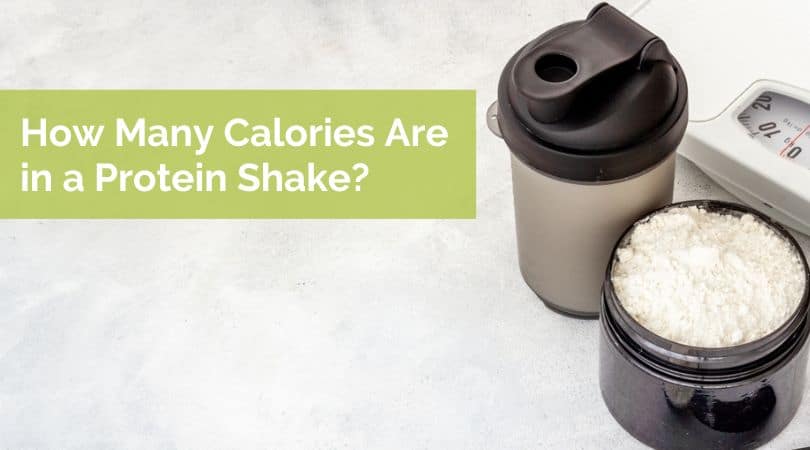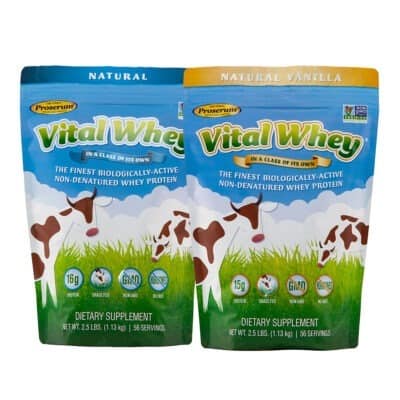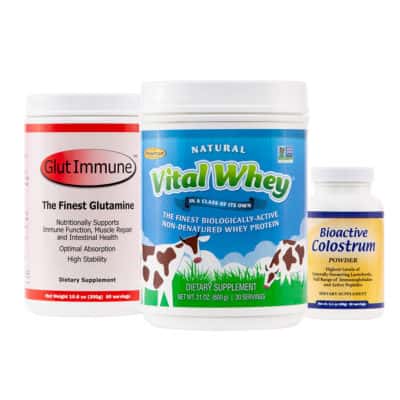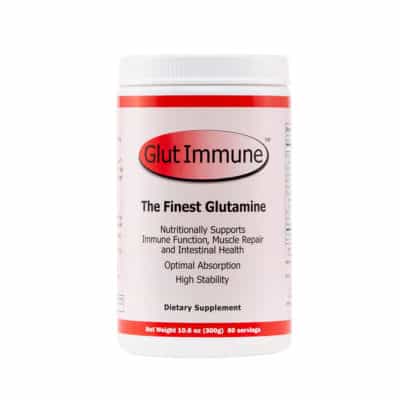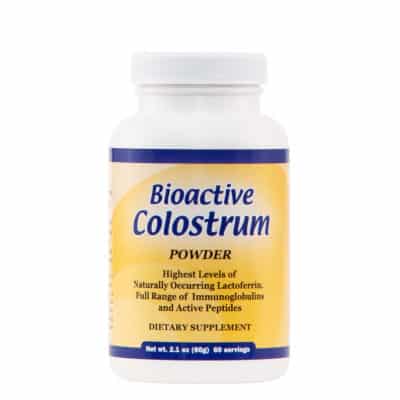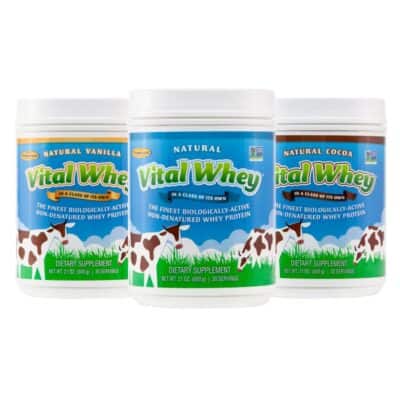Using a protein shake can be an easy way to meet your daily protein needs. Choosing the right protein shake can be as simple as understanding how much protein you need in a day and then finding the right shake for you.
Adults need between 10 and 35% of your daily calories from protein, according to the USDA dietary guidelines. Getting enough daily protein can seem challenging if you have little time and find yourself rushing when planning each meal.
The good news is that there is a way to make your protein shake fit your fitness goals. Discover how many calories are in a protein shake and how a protein shake can fit into your daily routine. In this article, we’ll explore protein calories, protein shake calories and how to find a protein shake that is right for you.
Daily Protein Needs
First, we need to know whether we are getting enough protein. The current Recommended Dietary Allowance (RDA) for protein is 0.8 grams to 1.0 gram per kilogram body weight. Though, the RDA is just a starting point and does not account for all different types of physical activity or other phases of life that may require a higher protein intake.
Protein recommendations for athletes and frequent exercisers are higher. Daily protein should be 1.4 to 2.0 grams per kilogram body weight to meet the added demands of exercise.
Protein Powder Calories
Are there calories in protein powder? Yes, but the calories in protein powder will differ based on the protein source. Protein powders can come from animal sources such as whey from milk or plant sources like pea and soy.
Let’s start with how many calories per gram of protein. One gram of protein provides 4 calories. When you look at a Nutrition Facts Label, search for the grams of protein listed for each serving. If you would like to know how many calories protein provides, multiply the grams of protein by 4.
For example, if you have a protein powder with 10 grams of protein, multiply 10 grams of protein by 4, and you know that 40 of the calories provided by this food are coming from protein.
Whey Protein Powder
Whey is the primary form of protein that you will find in cow’s milk. Whey protein is one of the mostly widely used protein sources when it comes to protein shakes and powders. To get the most bang for your buck, look for the highest quality whey powder that avoids or limits unnecessary ingredients or empty calories such as those found in Vital Whey protein powder.
Pasture raised cows are the source of Vital Whey protein powder. Vital Whey cocoa and vanilla protein powders have 80 calories and 15 grams of protein per scoop. Natural Vital Whey protein powder has 85 calories and 16 grams of protein per scoop. Having lean sources of protein like the options listed above allows you to cut to the chase and get directly to what you are needing to nourish your body without all the added fillers or additives.
ImmunoPro Proserum is a denatured whey protein powder that delivers all the immune benefits of raw milk, but in a powdered form. One scoop of ImmunoPro has 20 calories and 4 grams of protein.
Plant Protein Powder
Plant protein powders are made from grinding plants such as peas and soy beans into a fine powder. Plant based protein powders typically contain more fiber than whey protein, but have a similar nutrition profile to whey with an average of 80 calories and 15 grams of protein per serving.
Though, the similarities end at the calorie count between pea and whey protein. Whey protein consistently outperforms pea protein when it comes to muscle recovery from exercise.
Make the Most of Your Protein Shake
Making a daily protein shake can be a quick and delicious way to add a full protein serving.
Should you have a protein shake as a meal or as a supplemental snack? The difference between the two types of protein shakes is the calories.
Supplemental Protein Shakes
How much calories do protein shakes have? Supplemental protein shakes are a quick protein serving you can make after a workout, between meals and on the go.
The calories of a supplemental protein shake should be lower than a meal replacement shake. Supplemental shakes, such as post-workout protein shakes, can have between 150 and 200 calories and 20 grams of protein to help promote muscle repair.
For a low calorie protein shake, simply add one scoop of Vital Whey protein powder with 8 ounces of water. To make a post-workout shake, add a scoop of Vital Whey protein powder and 8 ounces of low fat milk or almond milk for a few extra calories to help promote workout recovery.
Meal Replacement Protein Shake
As the name suggests, meal replacement protein shakes should be higher in calories and protein as they are meant to replace a meal. These protein shake calories should be between 300 and 500 calories.
You can add more fiber and nutrition to your shake by adding fruits and vegetables, along with whey protein powder to include more nutrients to your shake and better imitate the nutrients you would get from a meal.
To make a meal replacement protein shake, start with 2 scoops of Vital Whey powder. Add 8-10 ounces of milk. Try blending in baby spinach and a fruit such as bananas or berries.
If you need more ideas for how to make a protein shake, visit our recipes section.
Take Away–Protein Shake Calories
Meeting all your daily protein needs takes a concerted effort. Understanding how many calories are in a protein shake will help you find the right one for your daily nutrition needs. Making a daily protein shake can be a convenient way to add as many, or as few calories as you need to get the right amount of protein.
Look for high quality whey protein products. Vital Whey protein powders are all natural sources of whey protein to add to your daily routine.
References
- U.S. Department of Agriculture and U.S. Department of Health and Human Services. Dietary Guidelines for Americans, 2020-2025. 9th Edition. December 2020.
- Dietary Reference Intakes for Energy, Carbohydrate, Fiber, Fat, Fatty Acids, Cholesterol, Protein and Amino Acids. (2005). Food and Nutrition Board. Institute of Medicine of National Academies.
- Campbell, B., Kreider, R.B., Ziegenfuss, T. et al. International Society of Sports Nutrition position stand: protein and exercise. J Int Soc Sports Nutr 4, 8 (2007).
- How Many Calories are in One Gram of Fat, Carbohydrate and Protein? Food and Nutrition Information Center.
- “Organic Pea Protein Powder” Search Results. FoodData Central. USDA Agricultural Research Service.
- Nieman DC, Zwetsloot KA, Simonson AJ, Hoyle AT, Wang X, Nelson HK, Lefranc-Millot C, Guérin-Deremaux L. Nutrients. 2020 Aug 9;12(8):2382. doi: 10.3390/nu12082382.
- Aragon AA, Schoenfeld BJ. Nutrient timing revisited: is there a post-exercise anabolic window? J Int Soc Sports Nutr. 2013 Jan 29;10(1):5. doi: 10.1186/1550-2783-10-5.
- Should You Take Whey Protein Powder After Surgery? - March 2, 2023
- How Much Protein is Too Much? - January 30, 2023
- Is Whey Protein Keto Friendly? - January 30, 2023

